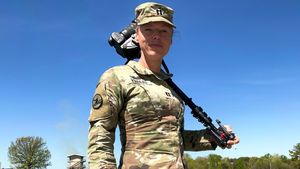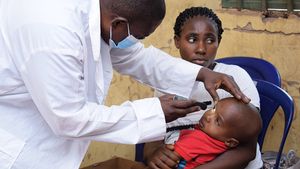Published in the journal Cell, the findings provide insight into how the primate equivalent of HIV interacts with the blood and body of monkeys at the onset of infection; which could improve chances of a viable HIV vaccine.
Simian Immunodeficiency Virus is similar to HIV in regards to how the virus behaves, so understanding the behavior of SIV is crucial to any research for an HIV cure or vaccination.
Lead author of the study at Beth Israel Deaconess Medical Center, Dan Barouch is also a professor of medicine at Harvard University. He underscored the importance of the research, the first of its kind to examine the behavior of the virus within the body of an infected being, and provided a unique learning opportunity.
“The events during the first few days after exposure to the virus and prior to the initial detection of virus in the blood are critical in determining the course of infection, but this period is essentially impossible to study in humans...Our study is the most comprehensive evaluation of acute HIV/SIV infection to date.”
Because they can't infect humans with HIV to study the first few weeks after transmission, scientists have relied on monkeys. In this study, physicians exposed 44 Rhesus Macaques (Macaca mulatta) to SIV. They found that within 24 hours of exposure, the virus spread quickly throughout the subject’s body. During this period, the virus appears to trigger “a local inflammatory response that appears to suppress antiviral innate and adaptive immunity, thus potentially augmenting its own replication”, according to Dr. Barouch.
Triggered by SIV, this response seems to prevent the body's immune system from attacking the invading organism the way it would normally. After the initial 24-hour period, SIV genetic material could be found in tissue outside of the exposed individual’s reproductive system. From this genetic material, SIV is able to reproduce and continue spreading.
In addition to this, SIV’s RNA (Ribonucleic Acid, a molecule similar to DNA containing all of the information necessary to the function of a living being), contains a host protein named NLRX1. This protein prevents the immune system from mounting its own response to the presence of SIV.
The rapid spread of SIV and the behavior of NLRX1, suggest that there is a very limited window of time between contact with the virus and the spread of the virus throughout the person’s body. Barouch believes that this new information will be “critical” to developing a viable vaccination or cure for HIV.
The findings can be seen another way as well: as further justification for the use of PrEP and PEP (post-exposure prophylaxis) or adoption of a vaccine. That's because people rarely learn they've been exposed to HIV (let alone receive treatment) within the first 24-hours, so that window of viral weakness too quickly comes and goes. If, however, someone was already taking PrEP then they would be protected; as would someone who'd received an HIV vaccine. One the other hand, someone with neither of those preventative treatments could still recognize that they've been potentially exposed and they could pursue treatment with PEP as soon as possible.
The researchers believe that further examination needs to be done to find other ways to intervene early in the onset of infection.
Because of its similarities to HIV, previuos attempts have been made to cure or vaccinate against SIV to no avail. A 2013 study by Oregon Health & Science University did test a vaccine on primates, but its success rate was below 50 percent, and further testing would be required before it could be available to humans.













































































